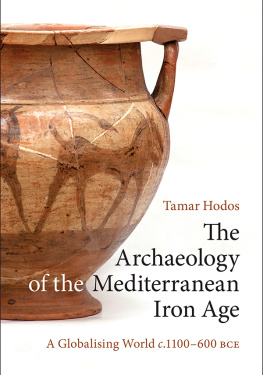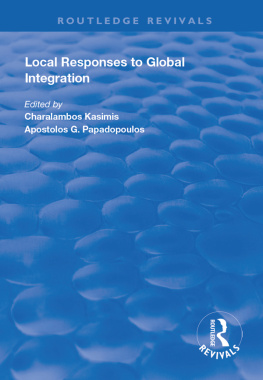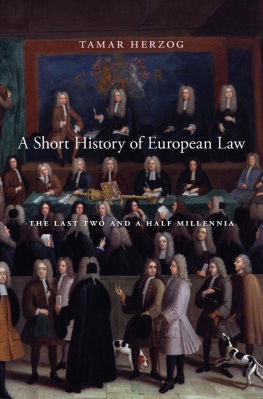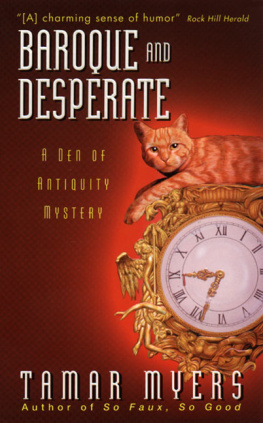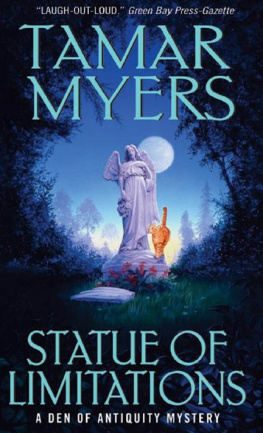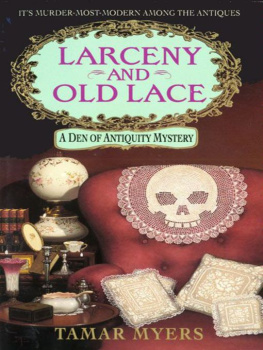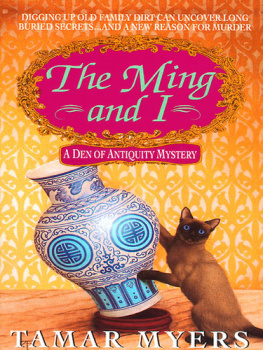LOCAL RESPONSES TO
COLONIZATION IN THE
IRON AGE MEDITERRANEAN
LOCAL RESPONSES TO
COLONIZATION IN THE
IRON AGE
MEDITERRANEAN
Tamar Hodos
First published 2006
by Routledge
2 Park Square, Milton Park, Abingdon, Oxon OX14 4RN
Simultaneously published in the USA and Canada
by Routledge
270 Madison Ave, New York, NY 10016
Routledge is an imprint of the Taylor & Francis Group, an informa business
2006 Tamar Hodos
Every effort has been made to contact copyright holders for their permission to reprint material in this book. The publishers would be grateful to hear from any copyright holder who is not here acknowledged and will undertake to rectify any errors or omissions in future editions of this book.
All rights reserved. No part of this book may be reprinted or reproduced or utilized in any form or by any electronic, mechanical, or other means, now known or hereafter invented, including photocopying and recording, or in any information storage or retrieval system, without permission in writing from the publishers.
British Library Cataloguing in Publication Data
A catalogue record for this book is available from the British Library
Library of Congress Cataloging in Publication Data
Hodos, Tamar.
Local responses to colonization in the Iron Age Mediterranean / Tamar Hodos.
p. cm.
Includes bibliographical references and index.
1. Mediterranean RegionColonization. 2. Mediterranean RegionAntiquities. 3. Iron ageMediterranean Region.
I. Title.
DE60.H6 2006
930.16dc22
2006004392
ISBN10: 0-415-37836-2 (hbk)
ISBN13: 978-0-415-37836-9 (hbk)
LIST OF ILLUSTRATIONS
| 2.1 |
| 2.2 |
| 2.3 |
| 2.4 |
| 2.5 |
| 2.6 |
| 2.7 |
| 2.8 |
| 2.9 |
| 2.10 |
| 2.11 |
| 2.12 |
| 2.13 |
| 2.14 |
| 2.15 |
| 2.16 |
| 2.17 |
| 2.18 |
| 2.19 |
| 2.20 |
| 2.21 |
| 2.22 |
| 2.23 |
| 2.24 |
| 2.25 |
| 2.26 |
| 2.27 |
| 2.28 |
| 2.29 |
| 2.30 |
| 2.31 |
| 2.32 |
| 2.33 |
| 3.1 |
| 3.2 |
| 3.3 |
| 3.4 |
| 3.5 |
| 3.6 |
| 3.7 |
| 3.8 |
| 3.9 |
| 3.10 |
| 3.11 |
| 3.12 |
| 3.13 |
| 3.14 |
| 3.15 |
| 3.16 |
| 3.17 |
| 3.18 |
| 3.19 |
| 3.20 |
| 3.21 |
| 3.22 |
| 3.23 |
| 3.24 |
| 3.25 |
| 3.26 |
| 3.27 |
| 3.28 |
| 3.29 |
| 3.30 |
| 3.31 |
| 3.32 |
| 3.33 |
| 3.34 |
| 3.35 |
| 3.36 |
| 3.37 |
| 3.38 |
| 3.39 |
| 4.1 |
| 4.2 |
| 4.3 |
| 4.4 |
| 4.5 |
| 4.6 |
| 4.7 |
| 4.8 |
| 4.9 |
| 4.10 |
| 4.11 |
| 4.12 |
| 4.13 |
| 4.14 |
| 4.15 |
| 4.16 |
| 4.17 |
| 4.18 |
| 4.19 |
| 4.20 |
| 4.21 |
| 4.22 |
| 4.23 |
| 4.24 |
| 4.25 |
ACKNOWLEDGEMENTS
I am grateful for the library assistance and financial support from various institutions, particularly the British Institute at Ankara and the British School in Rome, and the Universities of Oxford, Leicester and Bristol.
The following individuals have my deep gratitude for their encouragement, guidance, assistance, constructive criticisms and, in some cases, manuscripts: Carla Antonaccio, John Boardman, Neil Christie, Lin Foxhall, Marie-Henriette Gates, Matt Gibbs, Sue Grice, Linda Hulin, Thomas Keller, Bernard Knapp, Gunnar Lehmann, Kathryn Lomas, Roger Lonsdale, Jonathan Lucas, David Mattingly, Nicoletta Momigliano, Margaret Morrison, Josh Pollard, Joe Shaw, Anthony Snodgrass and Peter van Dommelen.
This book would never have even been conceived if it had not been for my parents, Bill and Nira Hodos, who have always encouraged me to wear my travelling hat, and I happily dedicate this work to them.
1
INTRODUCTION
The Iron Age remains one of the most dynamic periods of Mediterranean history. Individuals travelled further than ever before, with various peoples settling along foreign shores throughout the Sea, not just the central or eastern regions as during the Bronze Age. Greeks and Phoenicians, in particular, established themselves on all coasts, from North Syria and Cilicia to France and Spain, from North Africa to the coasts of the Adriatic. This is the age of the dissemination of the alphabet from Phoenicians to Greeks, and the subsequent development of alphabetic scripts based upon the Phoenico-Greek model by populations throughout the Mediterranean. This is also the period that generated the so-called Orientalizing Movement, in which other aspects of Near Eastern cultures, particularly material goods and religious ideas, inspired and motivated the Greeks and others in their own products and practices. The volume and variety of items traded throughout the Mediterranean, via long distance and more localized routes, expanded to unprecedented levels.
This book explores one major aspect within this vibrant setting: the responses by local populations to the permanent establishment of nearby foreign communities. Virtually every element of this statement demands explanation, justification and parameter-setting, although an even greater question that deserves an answer first is why . The Iron Age Mediterranean as a place during a particular time falls between spheres of scholarship, particularly those traditionally defined as Classical Archaeology and Near Eastern Archaeology. Study of the Greeks, as one significant culture active throughout the Mediterranean, represents a major component of the former, while study of the Phoenicians, as another significant, active culture across the Mediterranean, is usually addressed by scholars in the latter (but not exclusively). Both disciplines, however, have a reputation for working in isolation from other archaeological fields and are perceived to have been slow to adopt innovations in scholarship, particularly the integration of archaeological theory. While this is not the forum for a debate about the merits or deficiencies of the application of theoretical models to a body of data, developments in theoretical interpretations do provide an impetus for reflection upon previous views. Inspired by postcolonial perspectives in particular, this volume aims to reinterpret data from across the Mediterranean as a means of shedding new light on ancient interactions.


